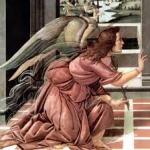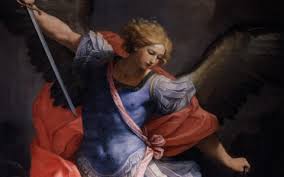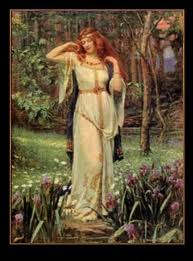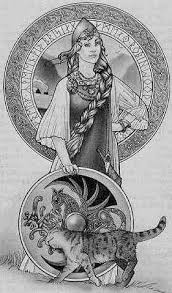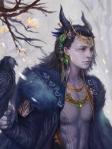 My Valentine song: I Choose You, Sara Bareilles.
My Valentine song: I Choose You, Sara Bareilles.
For all the Valentine couples in the world. “Let love rule the day.”
ORIGINS
There are several legends about the origin of Valentine’s Day that go back to ancient Rome. The first connects Valentine’s Day to the feast of Lupercalia on February 15. Juno, the goddess of love and marriage, and Faunus or Pan, the god of nature, were worshipped during this festival. At this feast, young Roman men put the names of young maidens into a box and then drew out a name by chance. The girl whose name was drawn by a young man became his partner for the Lupercalia festival.
In AD 496, Pope Galasius of Rome chose a ‘substitute patron for Christians.’ The new celebration was to honor a Christian bishop named Valentine who was beheaded for his belief on the Palatine Hill where an altar to Pan stood. Christians began to celebrate Valentine’s Day on February 14, but kept many of the customs of the ancient Lupercalia.
Some historians claim that the bishop St. Valentine of Terni has been confused with another St. Valentine, living also during the reign of Emperor Claudius II AD 268-270 and imprisoned for secretly marrying couples. Claudius had placed a ban on marriage in order to recruit more young soldiers into the army, whereas, another version of the story identifies St.Valentine as the bishop who was beheaded on February 14.
According to Catholic Online, the historical and biblical database, both accounts might belong to the same person. Bishop Valentine was arrested for his beliefs and put to the test by a judge named Asterius. St. Valentine was asked to cure the judge’s daughter who was blind. Judge Asterius promised he would do anything for the bishop if he cured his child. Valentine placed his hands on the girl’s eyes and her vision was restored. Overcome and ‘humbled’, Asterius, along with his household, converted to Christianity and ‘freed all of his Christian inmates.’ Later, St. Valentine was once again arrested for his attempts to convert people and sent to Rome ruled at this time by Claudius II. St. Valentine was accused of trying to marry Christian couples and helping Christians being persecuted by Claudius. Both were considered ‘serious crimes’ and often St. Valentine came before Claudius. When St. Valentine tried to convert Claudius, the emperor became enraged and demanded he renounce his faith or ‘be beaten by clubs and beheaded.’
Other sources claim that St. Valentine married couples so husbands wouldn’t have to fight in the army, and another one says he refused to worship pagan gods and that on the day of his execution, knowing his jailer’s daughter was blind, he left her a note. When the jailer returned home, he unrolled the ‘scrap of papyrus’ and read it to his child. It said, ‘From your Valentine.’ Included in the message was a yellow crocus and when she held the flower up, she regained her sight.

 THE FIRST VALENTINE’S GREETINGS AND CARDS
THE FIRST VALENTINE’S GREETINGS AND CARDS
The first valentine greetings can be traced back to the 15th century in France. The Duke of Orleans imprisoned in the tower of London after the battle of Agincourt wrote to his wife a greeting in French which names her as his valentine. The oldest surviving greeting in English in the British Library dating from 1477 was sent by Margery Brews to her fiancé John Paston and says: ‘right well-beloved Valentine.’
In the 17th century, in Shakespeare’s Hamlet, Ophelia says:
Tomorrow is Saint Valentine’s Day.
All in the morning betime,
And I a maid at your window,
To be your valentine.
The most famous Valentine poem comes from a collection of nursery rhymes from 1784.
The rose is red, the violet blue,
The honey’s sweet, and so are you.
Valentine cards first appeared in the 18th century and were handmade. They were often decorated with ‘flowers, love knots, puzzles and lines of poetry.’ Books existed that could offer a person guidance on how to select the right words and images to ‘woo their lover.’ Valentines were secretly tied to a doorknocker or slipped under the door. Soon the pre-printed card came to be with the oldest example dating to 1797 held at York Castle Museum in London. Decorated with cupids and flowers it reads:
Since on this ever Happy day,
All Nature’s full of Love and Play
Yet harmless still if my design,
‘Tis but to be your Valentine.
In the 19th century, industrialization brought the ability to mass-produce Valentine cards, which became very popular in England and by the mid-19th century, Valentine cards made it to America. In 1913 Hallmark Cards produced their first Valentine.
In America today, Valentine’s Day has become a very commercial holiday. More than cards are purchased these days. Gifts of chocolate, jewelry, and flowers are now included. It’s amazing to me that today we still celebrate a holiday focused on romantic love, which goes back to an ancient time period that celebrated a belief or tradition based in love as well.
Red Letter Days: St. Valentine’s Day
Sabuda, Robert, St. Valentine
Barry, Anna Marie, ‘A brief history of Valentine’s Day Cards’ History



















